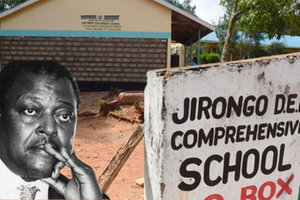Premium
William Ruto manifesto short on specifics in manufacturing

Deputy President William Ruto during the launch of the Kenya Kwanza Manifesto, at Kasarani Stadium, Nairobi on June 30, 2022.
The Kenya Kwanza manifesto is general on the manufacturing sector and lacks details on specific actions to turn around the sector.
The document identifies leather, building products, garments, pharmaceuticals and medical supplies and textiles as some of the key areas to spur growth and create employment.
“[Manufacturing] has fallen from 9.3 per cent to 7.6 per cent in five years (2016-2020). Paradoxically, manufacturing has borne the brunt of the infrastructure investment drive that is meant to spur industrialisation in terms of the crowding out from the credit market by government, and lately, by the external debt service pressure on foreign exchange...,” the document reads.
The alliance proposes value addition chains to various segments such as edible oil processing, dairy, electric vehicle and plastic waste.
The alliance estimates that the leather industry is worth Sh15 billion and has created 17,000 jobs (7,000 formal, 10,000 informal) but has the potential to rise to a Sh120 billion industry with 100,000 jobs.
“Kenya Kwanza commits to set up leather industry clusters in Athi River, Narok, Isiolo and Wajir and secure linkages with and technical support from overseas markets,” the manifesto reads.
The alliance promises to establish standards to enable Jua Kali artisans to mass produce fittings like windows, doors and other building products.
For the pharmaceuticals and medical supplies segment, the alliance promises to review the tax regime and cost of doing business and “work towards a regional pharmaceutical manufacturing hub”.
The manifesto says that “simplistic interventions such as banning mitumba will not solve the problem” of low production of local garments and textiles. It promises to develop a supply chain for cotton raw material since the industry imports more than 90 per cent of raw materials from Asia.





